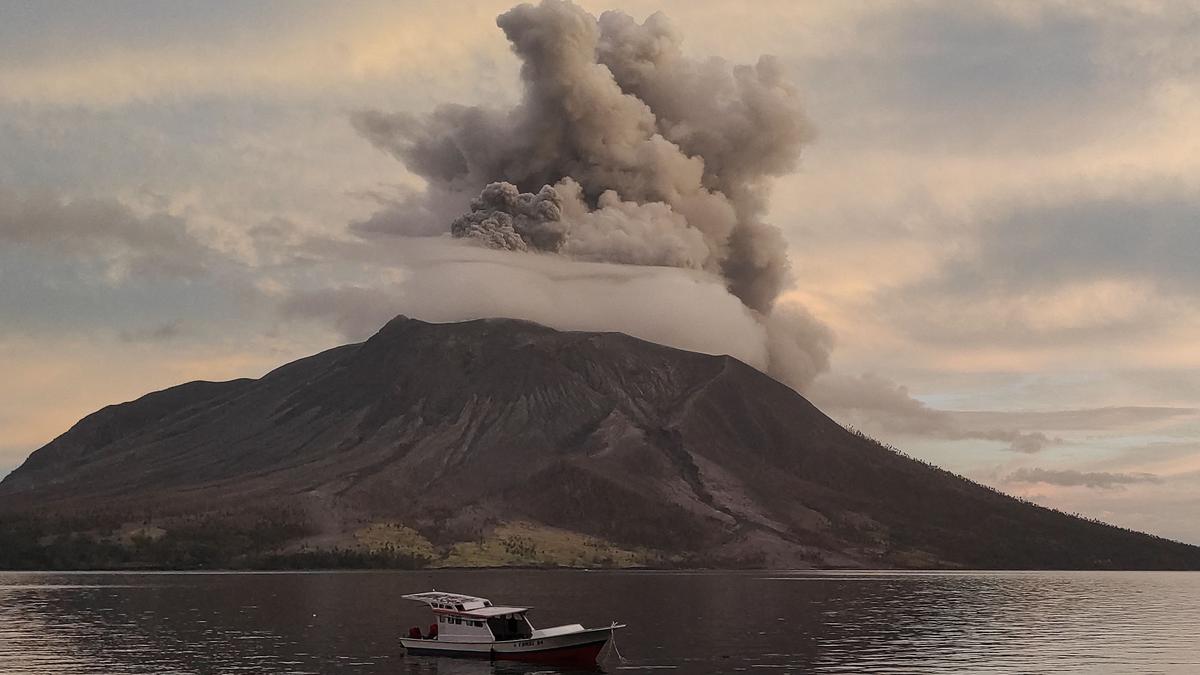Mount Ruang, a remote volcano in Indonesia’s North Sulawesi region, has erupted in a spectacular display of nature’s power, forcing thousands of residents to flee their homes. The initial eruption sent an impressive ash plume soaring 400 meters (1,312 feet) above the peak, marking the beginning of a significant volcanic event. The volcano’s activity intensified, producing a dangerous combination of:
- Flowing lava streams
- Towering ash columns
- Dramatic volcanic lightning
Emergency Response and Evacuation Efforts
In response to the escalating crisis, authorities launched an immediate evacuation operation:
- More than 6,000 residents of the neighboring Tagulandang island were safely relocated to areas facing away from the crater
- Emergency services aimed to evacuate a total of 11,000 people from the designated exclusion zone
- This evacuation echoes a similar crisis during Mount Ruang’s last major eruption in 2002
Comprehensive Assessment of Volcanic Hazards
Expert Warnings and Safety Measures
Indonesia’s volcanology agency has issued several critical warnings:
- Ongoing Threats:
- Flying volcanic rocks
- Dangerous hot clouds
- Continuous lava flows
- Health Precautions:
- Mandatory mask wearing for all residents
- Measures to prevent respiratory issues
- Additional Hazards:
- Potential partial collapse of the volcano
- Risk of tsunami generation from volcanic activity
Widespread Impact on Regional Infrastructure
Community Disruptions
The eruption has caused severe disruptions to daily life:
- Residential Areas:
- Widespread evacuation leaving houses empty
- Significant damage to residential structures
- Essential Services:
- Electrical outages across affected islands
- Communication blackouts in both Ruang and Tagulandang islands
- Immediate Needs:
- Residents urgently requesting tarpaulins for damaged roofs
- Ongoing assessment of additional humanitarian requirements
Transportation Impacts
The nearby international airport in Manado city, despite being over 100 kilometers (62 miles) from the crater, has been affected by the eruption.
Indonesia’s Volcanic Context
The Pacific “Ring of Fire”
Indonesia’s unique geological position explains its frequent volcanic activity:
- Geographical Context:
- Located on the Pacific “Ring of Fire”
- Home to numerous active volcanoes
- Historical Perspective:
- Regular seismic and volcanic events
- Previous catastrophic eruptions, including Mount Anak Krakatoa
Notable Historical Event
The eruption of Mount Anak Krakatoa serves as a sobering reminder of volcanic dangers:
- Partial collapse of the crater
- Triggered a devastating tsunami
- Resulted in over 400 fatalities
- Injured thousands of people
Ongoing Monitoring and Future Concerns
Continued Vigilance
As the situation at Mount Ruang evolves, authorities maintain:
- Constant monitoring of volcanic activity
- Regular updates to evacuation protocols
- Assessment of potential long-term impacts
Community Resilience
Local communities, though facing significant challenges, demonstrate remarkable resilience:
- Adapting to evacuation measures
- Supporting fellow residents
- Cooperating with emergency services




 Operation Hawkeye: US and Jordan Strike ...
Operation Hawkeye: US and Jordan Strike ...
 India and the Netherlands Set Up Joint T...
India and the Netherlands Set Up Joint T...
 Brazil Hands Over BRICS Presidency to In...
Brazil Hands Over BRICS Presidency to In...







